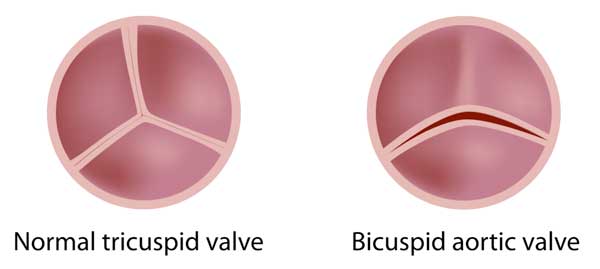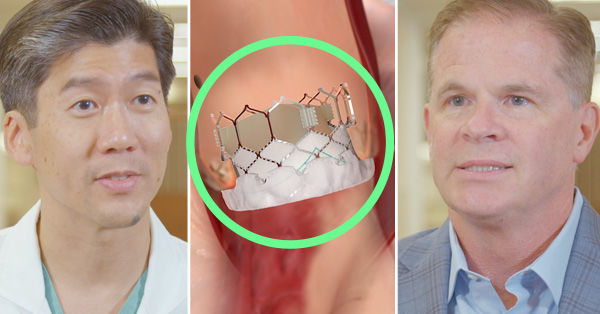TAVR or SAVR: Which Operation Did Jim Get For Aortic Stenosis?
By Adam Pick on December 16, 2019
With the FDA approval of transcatheter aortic valve replacement (TAVR) for low-risk patients, people everywhere are wondering whether-or-not TAVR is right for them.
Jim Whitney, from Chicago, Illinois, is a perfect example. Diagnosed with aortic stenosis, Jim had been in “watchful waiting” for five years. Recently, Jim found himself completely out-of-breath as he ran to catch a train. He knew it was time for surgery. Jim pressed his surgeon, Dr. Chris Malaisrie, an aortic valve specialist at Northwestern Memorial Hospital, for a non-invasive TAVR.
Did Jim get a TAVR? Or, did Jim get a surgical aortic valve replacement (SAVR)? What should you know about TAVR and SAVR? Watch this video to learn more.
Many thanks to Jim for sharing his inspirational story with me and our community!!! A special thanks goes out to Dr. Chris Malaisrie and the entire team at Northwestern Memorial Hospital for taking such great care of Jim!!!
Related articles:
- See 35+ patient testimonials for Dr. Malaisrie
- Discover the Northwestern Memorial Hospital Heart Valve Microsite
- Breaking News: Low Risk TAVR Gets FDA Approval
Keep on tickin’ Jim!
Adam
P.S. For the hearing impaired members of our community, I provided a video transcript below.
Jim Whitney: The thought of heart surgery is very intimidating. It’s something that keeps you up at night. Now that I’ve gone through it, it really is a life-changing experience. It puts me back to what I’ve been able to do in the past. That to me is transformational.
It was about five years ago my general practitioner said he thought he heard a heart murmur. He said, “Jim, I’d like you to connect with the Bluhm Cardiac Institute at Northwestern. I met Dr. Davidson a couple of months afterwards. He said that I had a bicuspid valve. Most of us have three leaflets; I had two. He said, “Jim, we’re going to monitor this very slowly, but when it gets time to go, go time, we’re going to move very quickly.

The defining moment for me, I was leaving my office downtown. I was late to catch a train and I was completely out of breath. That to me was the tell that something had dramatically changed.
Dr. Malaisrie: Mr. Whitney was diagnosed with aortic stenosis. His aortic valve was calcified, tight, and restricting blood flow coming out of the heart. Patients typically will have shortness of breath, chest pain, or passing out.

For Mr. Whitney, he had a very special type of aortic stenosis. He was born with an abnormal valve, a two-leaflet valve otherwise known as a bicuspid aortic valve. Most patients have a three-leaflet valve. The bicuspid aortic valves are important because they tend to calcify very quickly which makes it a very interesting question as to whether the patient should get treated with TAVR or minimally-invasive AVR. That’s when it’s very important for patients to come and see a valvular heart team in order to help the patient decide which is the best mode of therapy.
Jim Whitney: Prior to my surgery, I did a lot of investigative work. I spoke to friends who are in the medical profession. I have clients who are surgeons. All of my research converged upon Northwestern and Dr. Malaisrie in particular. I felt Dr. Malaisrie was the right surgeon for me because this is exactly what he does. This is his area of specialization. He’s performed over 1,000 of these surgeries. Secondly, he is and the hospital is a destination for people that have complex cardiac needs.
Dr. Malaisrie: Traditionally, when we think about open-heart surgery for valvular heart disease, we think of the full sternotomy. If you think back and maybe you can remember an uncle or grandfather or grandmother who had a bypass surgery. That is a full sternotomy incision that goes right down the center of the chest. My preference is to do it through a mini-thoracotomy between the ribs which avoids the sternotomy.
New devices have emerged for a procedure called transcatheter aortic valve replacement or TAVR for short. This is a truly minimally invasive procedure. The procedure requires no general anesthesia (for our center), percutaneous access, meaning no complete incisions, sometimes home the next day status, so a very quick recovery for patients after TAVR.
Jim Whitney: Dr. Malaisrie and I talked about a TAVR procedure. I pressed him pretty hard for it because it seemed like the easiest way, minimally invasive. After some deep discussion with him, he thought I wasn’t the appropriate candidate for it.
Dr. Malaisrie: There’s a couple of subgroups of patients which should not be treated with TAVR. The first, the patients who would otherwise require a mechanical valve; that’s one. The second group of patients are patients who don’t have the typical senile calcific aortic stenosis in a three-leaflet valve. This is what Mr. Whitney had. Finally, there’s a group of patients that simply are anatomically not suitable for a TAVR. These patients also will do better with an AVR full sternotomy or minimally invasive.
Jim Whitney: Post-surgery, I was in the hospital for four days. I have to say that I knew going in I had one of the world’s best surgeons. I also have to say that the care that I received at this hospital post-surgery was extraordinary from my surgical intensive care nurse to the step-down unit, from start to finish. I have to say that my experience here at Northwestern Hospital was world-class.
Dr. Malaisrie: Mr. Whitney did very well after his minimally invasive aortic valve replacement. The first thing to note was he had perfect result. The aortic valve was seated very well with zero leakiness. That’s important. There’s so many choices now available for therapy that my advice to the patient is to make sure you explore all the options for therapy and make sure that the center that you go to is experienced in each one.
Jim Whitney: To me, Dr. Malaisrie is a very understated man, but he changes people’s lives in extraordinary ways. I still am trying to think of a way to thank him for what he did for me. I am very fortunate to have him as my surgeon.













